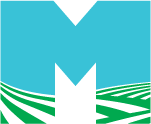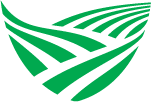Agricultural drainage has been an established practice that allows Minnesota’s farmers to make land productive for growing crops, but one Minnesota company looks at agricultural drainage in a different light – as agricultural water management.
Enter Ellingson. Started in West Concord, they are now the largest water management contractor in North America. In fact, Ellingson will celebrate 50 years of business in 2020.
“We have around 300 employees with our home office in West Concord, our 2008 expansion in Harwood, North Dakota, and then stationed around the United States,” says Levi Otis, Ellingson’s director of government affairs.
Why should farmers think about it as more than just agricultural drainage?
“It isn’t water drainage anymore. With new lift stations and monitoring, we can keep water in a farmer’s root zone so plants can use it a later date. You aren’t just draining the water away,” Otis says. “You really are maximizing the use of the water we do get.”
Mike Tveten, project manager for the Engineering and Technology Group, says the word “drainage” can be misleading.
“’Drainage’ implies you are just trying to get rid of the water. We take a proactive approach,” Tveten says. “With the weather patterns we have been seeing, there is no happy medium for moisture. If we can conserve water but provide drainage when needed, that’s the new happy medium.”
Automated lift stations are a new reality to the agricultural water management industry. Lift stations can be controlled from a cell phone, an iPad or a computer.

“With lift stations, we are able to tile fields we previously couldn’t,” Otis says. “We can control the flow, which reduces the amount of nutrients going downstream. Weather permitting, we can actually improve water quality issues.”
While Ellingson invests in their own technology, they also take advantage of the precision agriculture realm their farmer customers work in while utilizing farmer-supplied data.
“Farmers retain an extreme level of detail when it comes to available data about their fields,” Tveten says. “We utilize this data to make better decisions on the design of the systems and bring everything to site-specific parameters.”
Ellingson is working on a new pilot project that could potentially change the way agriculture drainage data is produced and viewed for future regulation. The project involves creating a 16,000 acres sub-watershed drainage system with the Red River Basin Commission and several other entities. The project will pattern tile with lift stations all to one drainage ditch.
“The water quality already is quite good – it shows that our farming community is already doing things really well where water quality is concerned,” Otis says. “Now we can monitor how we can improve water quality using drainage, monitor increased productivity on bushels, factor in increase in property values and understand management of an entire watershed to alleviate some of the blanket regulation issues we see.”
Tveten says there are economic and regulatory factors to consider.
“We are spending a lot of time and effort trying to figure out solutions around Nitrogen,” says Tveten. “We need a solution that is scalable and economically viable, but we need to be proactive and solve this before regulations happen.”
Otis notes that one of the hardest parts of his job is dealing with the umbrella approaches to agricultural drainage regulation.
“We have a one size fits all approach, and some watersheds are trying to solve problems that don’t exist,” Otis says. “We need site-specific answers and based in the technology that we have today.”
Water management in agriculture continues to be a changing industry with new research, new technology and new ideas for the best ways to manage water in a farmer’s field.
“I think we will see increased installation of holding ponds along with subsurface irrigation in the future,” Otis says. “By combining drainage and subsurface irrigation, we can use 50 percent less water than traditional pivot irrigation.”
Otis envisions the future of completely automatic lift stations isn’t too far off, either.
“Right now, our farmers have to turn on the station themselves,” says Otis. “The future involves soil sensors in the field that monitor moisture, soil temperature, etc., as well as technology monitoring the weather forecast, and the lift station will predict when to turn the pump on.”
While technology will continue to advance and move Ellingson forward in the water management industry, they continue to honor where their business started – in agriculture.
“We are proud of our agricultural roots and that will continue to be the core of our business while we strive towards advancement in the industry,” says Tveten. “We come up with solutions that work for both the grower and water quality. Our goal is to find the win-win scenario.”

